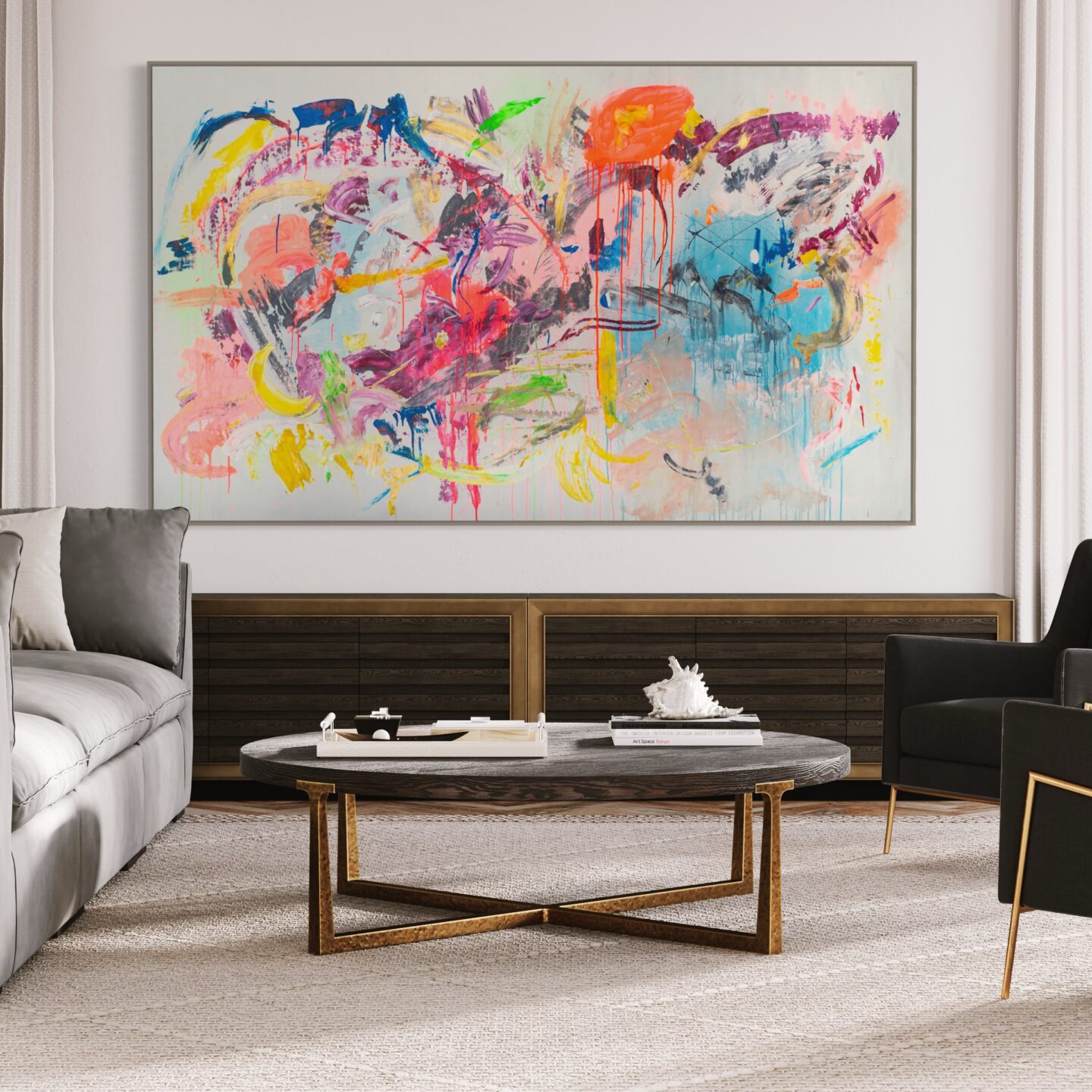Have you ever seen a boldly mesmerizing piece of abstract art adorning the wall in a film or TV series and thought about the character who owned it? Often seen in the homes of powerful characters in popular media, abstract art isn’t just for decoration—it carries a certain allure and significance that communicates sophistication, intellect, and power.
In “Mad Men,” the advertising genius Don Draper, known for his sharp wit and creative prowess, had an affinity for abstract art. This wasn’t just a matter of aesthetic appeal; it was a subtle indication of his intellectual depth and innovative thinking. Similarly, in the groundbreaking series “Succession,” the billionaire Roy family’s home is adorned with abstract artwork, underscoring their wealth, status, and a keen eye for value beyond the material realm.
But why is it that characters like these are typically associated with abstract art? The connection might be more profound than you think.
The intrinsic beauty of abstract art lies in its openness to interpretation. Unlike other art forms, it doesn’t tell a defined, coherent story. It leaves room for imagination, allowing the viewer to dive deep into their mind and extract a meaning that resonates with them. Hence, it’s often the intellectuals, the creatives, the mavericks, who are drawn to these enigmatic pieces, their minds capable of appreciating and deciphering the layers within the abstract.
Moreover, the appreciation of abstract art requires a certain degree of cultural and artistic knowledge, often associated with a higher level of education or social status. To put it simply, buying abstract art isn’t just a matter of taste, but a show of cultural capital.
Let’s not forget the significant role of abstract art as a symbol of financial power. With famous pieces by artists like Jackson Pollock or Mark Rothko selling for millions, owning a piece of abstract art has become a status symbol—a sign of affluence. However, it’s not just about the price tag. It’s about the willingness to invest in something intangible and profound, something that holds its value in sentiment and cultural significance rather than in dollars and cents.
However, this doesn’t mean that abstract art is only for the elite. The beauty of it lies in its universality. You don’t need to have a six-figure salary or a degree in Art History to enjoy abstract art. All you need is a mindset open to exploration and the ability to appreciate the mystery and beauty of the abstract.
So the next time you see an abstract painting in a movie or on TV, remember that it’s not just a prop—it’s a statement about the character who owns it. And if you’re considering buying an abstract piece for your own home, know that you’re not just buying a piece of art—you’re purchasing a symbol of your intellectual curiosity, your appreciation for the abstract, and your individuality. Abstract art is not just about breaking patterns in the artistic world; it’s about challenging norms and conventions in the real world. It’s a badge of sophistication, intellect, and power—a testament to the complexity of the human mind.

